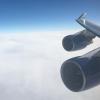
Fisher Aircraft is a relatively new entrant to the American aviation industry, based in Hartford, Connecticut near industry giants Pratt & Whitney and United Technologies (UTC). Its main base of operations located at Bradley International Airport (BDL) in Windsor Locks, CT.
Fisher began in 1986 in Windsor Locks as an FBO for Bradley under the name of "Fisher Flight Support," servicing corporate jets and charter flights which operated from the airport. In 1991, a small maintenance base was added for Learjets and Challenger business jets in partnership with Bombardier, which had acquired Learjet the year prior. In 1994, Fisher upgraded to become a Bombardier service center with full maintenance and repair services, leading to the renaming to "Fisher Aircraft Services & Maintenance." Over the coming years, Fisher expanded maintenance operations to include aircraft engines and avionics.
In 2008, Fisher made its leap into aviation manufacturing, purchasing the bankrupt very-light-jet manufacturer Echelon Aerospace from New Haven, CT (HVN) and transferring their operations 50 miles north to Bradley. As a result, the Echelon 100 jet was renamed to the Fisher Ultimate 100 and Fisher was renamed again to "Fisher Aircraft Manufacturing," which ultimately led to the termination of maintenance services with Bombardier. Most recently, Fisher focused on upgrading, upselling, and enhancing the Ultimate 100, with modest deliveries beginning in 2011 and onwards after the effects of the Recession fell off. As of 2014, the Fisher Ultimate 200, a re-engined and upgraded version of the Ultimate 100, is offered for sale.
Today, however, a brand-new factory for a new aircraft line is being constructed at Bradley, at 650,000 square feet. An additional facility for aircraft production in Massachusetts, Connecticut, or New York is currently being studied. Fisher plans to release a new 80-100 seat regional jet concept, dubbed the "Regional Jet of the Future," shortly. Specifications, however, are unknown at this time.

 Sign In
Sign In Create Account
Create Account
 Posted by
Posted by
























